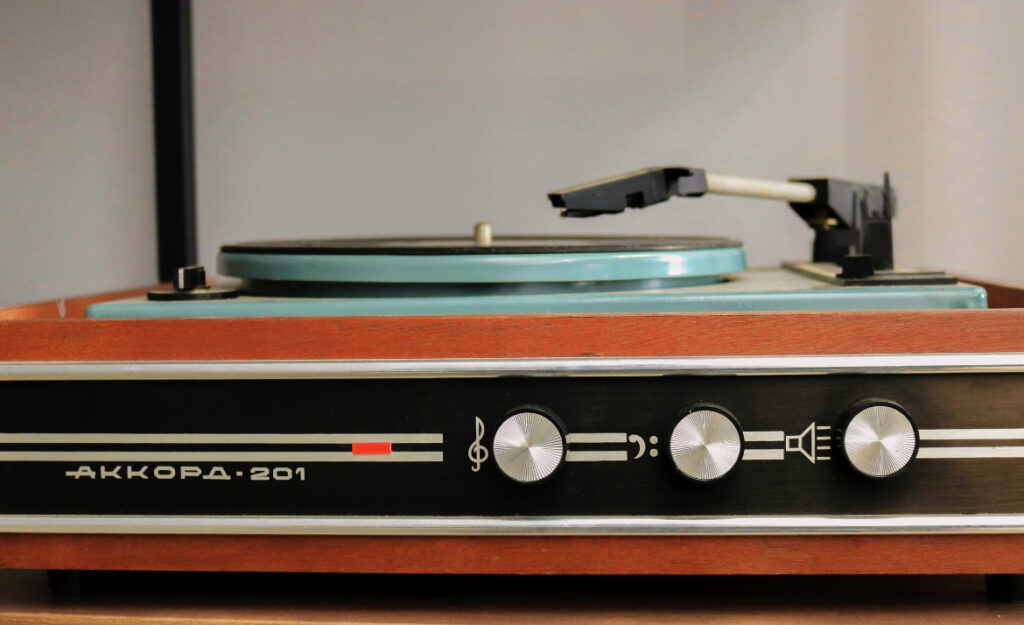
Vinyl fans spend hours tweaking every detail of their setup, eager for that pure analog warmth. The small step of turntable leveling, if skipped, can turn crisp sound muddy. You’ll uncover why in just a moment.
Once you start noticing how slight unevenness affects clarity, every new record becomes a test. The good news is that the process isn’t complex—once you have the right approach and tools, every album can sound its best.
If you’re ready for richer lows, clearer highs, and every groove captured as intended, stay tuned. This guide covers actionable turntable leveling strategies for vinyl records that you can try with confidence tonight.
Pinpointing Leveling Issues Yields Immediate Sound Gains
Locating unevenness in your turntable’s placement is more than a visual game—it’s a direct route to better fidelity. Addressing these small imperfections can instantly stop unwanted distortion and channel imbalance.
Start by surveying the spot where you’ve set the deck. A seemingly flat table can betray you after a close look with a high-quality bubble level. “I never thought a record shelf bowing out would sound different; then I checked it,” said a collector during a troubleshooting session, seeing real improvement with only a millimeter of correction.
Micro-Adjusting With Basic Tools
Even an inexpensive torpedo level can reveal trouble spots that throw off your platter. Place it horizontally across the center of the platter, then front-to-back, and side-to-side. If you see a tilt, fix it now by placing slim shims beneath the feet or the surface supporting your turntable. Recheck after each tweak for confirmation—the bubble must center in all directions.
Treat this step as your baseline before any other upgrades: a wobbly foundation undermines even the best cartridge or preamp. With the bubble leveled, listen for improved left-right imaging and a smoother bass response. These subtle gains add up over time.
Don’t rush—let your ears and measurements guide you. Perfect the process using everyday items like playing cards or folded paper under the feet until precision is achieved.
Troubleshooting Table and Stand Issues
Using an unstable table can introduce vibration and throw off turntable leveling entirely. To test the surface, press lightly on a corner and notice any movement. A stand that flexes or wobbles under a gentle touch needs to be replaced or reinforced.
Try moving your setup to a more stable shelf, ideally one attached to a supporting wall rather than a thin piece of furniture. A collector once remarked, “I swapped from the old coffee table to a tool bench, and the vibration vanished immediately.”
If options are limited, place thick felt or rubber pads beneath the turntable feet to deaden vibration transfer. When the base is steady and level, subtle groove details become noticeably cleaner.
| Leveling Tool | Cost | Accuracy | Actionable Tip |
|---|---|---|---|
| Basic Bubble Level | Low | Moderate | Works for quick checks; double-check results from multiple directions |
| Turntable Spirit Level | Medium | High | Place in center of platter for reliable accuracy every time |
| Digital Level Gauge | High | Very High | Use for fine-tuning when precision is critical |
| Smartphone Level Apps | Low | Variable | Calibrate first; test accuracy against a real bubble level |
| Shim Pack (Cards/Paper) | Very Low | Depends on method | Keep handy for fast, repeatable micro-adjustments without extra expense |
Feet, Isolation, and Support: Concrete Steps for Extra Clarity
Dialing in adjustable feet and isolation techniques quickly removes skips and rumble from your listening experience. Proper support turns frustrating vinyl moments into deep, immersive sessions.
If your turntable uses screw-in feet, a gentle twist is all it takes to raise or lower a corner for perfect turntable leveling. Not every model comes with adjustments, but you can add stick-on silicone pads under fixed feet, damping vibrations and helping with minor unevenness.
Fine-Tuning Isolation Methods
Precision isolation pays big dividends for vinyl records. Try a thick cork or sorbothane mat under your turntable’s feet. These materials absorb both surface and airborne vibrations, improving groove tracking and precision. If your room has bouncing floors, consider wall-mounting a shelf for near-total isolation.
- Use stick-on silicone feet under corners to absorb low-frequency vibrations—ideal for vintage tables without built-in isolation.
- Add weighted pucks or platforms beneath the unit—heavier supports counteract minor wobbles when family members walk nearby.
- Keep the turntable clear of subwoofers—bass energy can interfere with tracking. Place the deck at least two feet away from the nearest speaker.
- Double-check placement with a spirit level after each adjustment—changes to one foot can affect the overall level.
- Experiment with different surfaces. Test wood, glass, and MDF to find the best-matched resonance for your turntable type.
Listening for improvement after each quick tweak is the fastest way to lock in results. Do this with your favorite record and spot the difference in detail retrieval.
Adjusting for Platter and Arm Geometry
Dialing in precise leveling enables accurate tonearm alignment. An uneven platter can force the stylus to track at an angle, distorting sound and increasing wear. Solid geometry results from meticulous leveling at the base.
- Set anti-skate using the manufacturer’s method—perfect leveling keeps side-force in check.
- Measure vertical tracking angle with a protractor after the table is level—platter height must match the arm pivot.
- Secure the headshell after confirming level—avoid tightening while on a slanted surface to maintain proper contact with the record.
- Balance tracking force at zero before final placement on the platter—level ground ensures an accurate reading.
- Check azimuth using a mirror placed on the platter—a centered reflection means the stylus sits upright on a flat surface.
Repeat these geometry checks after major moves or upgrades, as vibrations and handling may compromise your hard-earned settings. Persistence brings consistent, high-fidelity playback.
Real-World Scenarios: Navigating Common Turntable Leveling Pitfalls
If you’re moving homes, switching furniture, or sharing your space with pets or kids, you’ll run into unique leveling challenges. Each scenario demands its own rapid response for vinyl enthusiasts who wouldn’t trade their records for anything.
Making Quick Adjustments After Relocation
Moving apartments can wreak havoc on turntable leveling. As you set up in a new room, furniture with legs may flex differently than your old setup. Many users say, “My records sounded dim after moving, and I found one end of the new shelf was off by several millimeters.” Use a trusted bubble level as soon as you set your gear down to catch these issues before your first spin. Shim as needed, then test playback before further tweaks.
If you encounter persistent skips or variable pitch, recheck your work. Catching these issues early helps you settle into the new space confidently.
Even small daily shifts—a partner moving furniture, a new rug under the table—require routine checks to protect playback integrity. Build a habit of quick inspections for big rewards.
Responding to Surface and Environmental Changes
Weather, humidity, and temperature shifts can slightly warp wooden shelves or floors. Over time, small changes make a measurable difference for vinyl playback. “Last winter, my trusted record rack dipped at one corner due to drafts,” shared one collector. Adding thicker pads resolved leveling overnight.
If you use older vintage furniture, warping may be subtle but destructive over months. Routinely rotate the bubble level and readjust as needed, especially after severe seasonal changes. Each season brings new potential for shift.
Quick visual checks take seconds, and the payoff is a consistently clear, undistorted sound regardless of outside conditions.
Habitual Checklists Keep Vinyl in Peak Form
Building a monthly checklist addresses many long-term turntable leveling headaches before you hear them. Each step, from visual inspection to touch-based adjustment, forms a cycle of care for your records and gear.
Schedule monthly or biweekly check-ins, marking your calendar for a Sunday afternoon or after a cleaning session. Use a soft cloth and level to inspect for movement and warping. Teach new vinyl fans in your family these steps to build long-lasting habits with their own collections.
Annual Deep Assessments
Once a year, go deeper: dismount and thoroughly clean both the turntable and its support. Inspect for floor settling—older homes may have shifted by several millimeters in a year. Log each new adjustment in a notebook for future reference, noting the date and the change made.
If you’ve made changes throughout the year—swapped furniture, rotated shelves, adjusted isolation—review each tweak against the last year’s setup. Set a reminder in your phone or calendar app as a prompt.
Encouraging family or housemates to alert you to bumps, spills, or moved furniture keeps your system in top shape year-round.
Creating a Troubleshooting Sequence
Aim to solve small problems before they grow: if you hear a new hum, inspect cable routing first, then confirm leveling next. These steps catch most issues. Follow up with an isolation check and test a new record for comparison.
Make it a rule—always recheck level before major listening sessions, or after guests have visited the music nook. It’s the equivalent of tuning a piano before a performance: small efforts preserve sonic excellence.
If you catch a subtle imbalance, act immediately and make notes for future reference. This process eliminates repeating errors between sessions and sharpens your analytical ear.
Proactive Upgrades for Serious Vinyl Playback
Small investments in better leveling tools or isolation systems bring surprising returns for vinyl lovers. Whether you’re buying a new turntable or upgrading a trusty old deck, knowing which features to prioritize helps secure enduring quality.
Look for features like built-in spirit levels, easy-to-adjust feet, and platforms with vibration damping in new purchases. “When I picked a table with a leveler on top, recalibration after every move became a quick five-minute routine. The improvement was obvious as soon as I dropped the needle.”
Smartphone Apps Versus Traditional Tools
While many modern turntables come with tools, smartphone apps offer convenience for those without specialized gear. Calibrate your device by comparing its accuracy to a bubble level first. Relying solely on apps can mislead if the phone’s sensors are out of sync.
Traditional spirit levels offer reliable results and allow you to confirm a perfect setting in three directions: left-right, front-back, and diagonal. Store the level with your cleaning kit for effortless routine checks.
An analog approach provides tactile confidence. If you use both digital and bubble levels, note any discrepancies and favor the more reliable result for final adjustments.
Annual Isolation and Support Upgrades
Each year, reassess your support and isolation methods to match changes in your space or listening habits. If your collection grows and shifts weight, tables may bow or flex unexpectedly. “A shelf that worked for ten records needed extra support after a big haul,” explained one collector who added brackets mid-year.
Evaluate your pad and mat condition. Rubber and cork lose elasticity over time, reducing vibration absorption. Replace worn pieces yearly, and use the opportunity to experiment with new materials for evolving sound preferences.
Continual upgrades keep systems fresh and your records singing through every listening season.
Conclusion: Commitment to Leveling Brings Consistent Vinyl Joy
From the start, it’s clear that careful turntable leveling impacts every moment spent listening to vinyl records. Sharper details, balanced channels, and less groove wear all follow from precise preparation and consistent habits.
The more faithfully you maintain level and isolation, the more you’ll hear in your cherished records. Like tuning an instrument before every session, these steps build pride and make each album’s story shine.
Treat your turntable to the extra care it deserves, and your listening space becomes a source of joy—one perfectly set record at a time.



